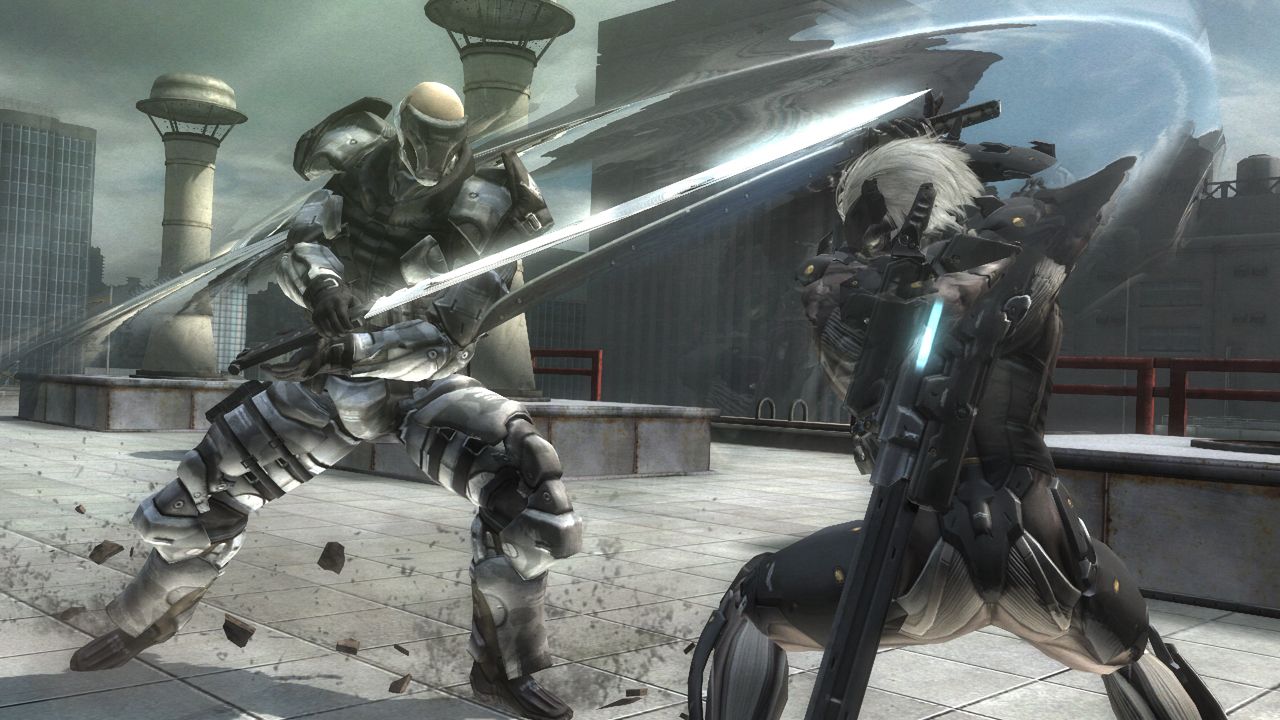There's a Good Reason Metal Gear Rising: Revengeance Came Back From the Dead
Elements that make up the game transcend the memes that spawned from it

Almost a decade after its release, Metal Gear Rising: Revengeance has been experiencing a resurgence in popularity marked by the widespread use of internet memes stemming from its most memorable in-game dialogue lines and moments. From a full-fledged conversation about memes (as in the transferring of ideas via imitation, not funny internet pictures) to near invulnerability being caused simply through nanomachines, there is no shortage of material when it comes to crafting exquisite Metal Gear Rising meme material.
But after a while, it became apparent that the game’s popularity did not waver straight after an initial surge of interest. In fact, players often converge in MGR-related videos to reminisce and appreciate the game (and that's not even mentioning its overwhelmingly positive response on Steam). Of course, if the game is mediocre, the attention it garnered would have withered away in months if not weeks; and yet, it endured. Why is that?
Taking place in 2018, players play as Metal Gear Solid 2 protagonist Raiden, who is now an agent of a PMC called Maverick Security Consulting, Inc. In MGR, Raiden finds himself entangled in an international conspiracy aiming to start another War on Terror following the disbandment of The Patriots. Throughout his journey, Raiden must combat an army of cyborg mercenaries and robots, not to mention a group of elite cyborg assassins called The Winds of Destruction, which serve as the bosses of the game.
The story of MGR is a solid one. It is quite straightforward and brief compared to past Hideo Kojima works, but still has his unique brand of mind-boggling storytelling, marked by the presence of heavy, profound use of dialogue and lengthy cutscenes. Like every good Kojima experience, the story is laden with plot twists, only this time in a simpler packaging compared to, say, Metal Gear Solid 4. The main theme surrounding the military-industrial complex and ‘war as a business’ issue is strangely relevant to this day, not to mention the message conveyed in THAT final mission that becomes more profound today.
Besides, what is a good Metal Gear experience without its unique cast of characters? MGR has no shortage of amusing and memorable characters that Raiden encounters during his journey, from his colleagues at Maverick to his adversaries, all of whom serve as windows into Raiden’s psyche through their interactions with the cyber ninja.
This especially applies to the Winds of Destruction, the aforementioned boss battles of the game. While all members of the Winds belong to the same faction, each of them has their own set of ideologies and reasons to fight. These ideals are further fleshed out during their interactions with Raiden, where they influence him in some way and ensure that their memes were passed along into his character development. Their dialogue with the protagonist might have come off as corny, but a sometimes hold a deeper meaning; just like how Kojima would have wanted it. This is especially true for the game’s final boss, where the back-and-forth between him and Raiden at times felt like a political debate of sorts.
While it can be argued that the story is too short, the amount of content and scenario variety packed into the single-player experience significantly increased its replayability without becoming too tedious; and even then, there are sections in the campaign that can feel dragged out. If the objective of the story is to make a lasting impression to the player in the shortest time possible, MGR’s story has achieved it.

It is possible that MGR can feel a bit short thanks to its engaging combat mechanics. Fast-paced and at times unrelenting, combat in MGR provides satisfying feedback on the player’s actions, whether is be slicing away enemies or parrying incoming attacks. Playing it for the first time might give the impression that the game is reliant on button-mashing; however, time will tell that mastering the game’s combat requires a certain amount of finesse. Not just the boss battles with unique mechanics, but with ‘regular’ enemies that can gang up on the player and accumulate a lot of damage through repeated attacks. Knowing when to attack, parry, dodge, and counterattack is vital in MGR’s book of combat. Unfortunately the camera paired with the game’s lock-on system often fail to keep up with the hectic action, causing it to jerk around and misorient players resulting in the disruption to the flow of combat.
An essential part of MGR’s combat is the cutting mechanic, which serves as a highlight of the game’s combat. With it, MGR has achieved what most action games could not: giving the players a sword that actually felt like a sword, that actually cuts. With Raiden’s high frequency blade through the in-game blade mode, players can cut through virtually anything: terrain, obstacles, robot parts such as turrets, and even enemy limbs. This can not only be used as a direct offense against the enemy, but also strategically; for instance, Raiden can cut down the supporting beams of a bridge that the enemy was on. And the technology used was nothing to sneeze at; Raiden can hack his enemies into dozens if not hundreds of small pieces, which was comically tallied in-game. The game’s zandatsu mechanic also compliments this feature well; by accurately slicing at a certain point of an enemy, Raiden can steal their cybernetic spine, absorbing it and fully recovering his health and energy.
Another gameplay aspect of MGR that is often underappreciated is its stealth mechanics. While it is undoubtedly rudimentary with tunnel-vision enemy AIs, it surprisingly compliments its combat mechanics well enough to become an alternative approach. Not to mention that it pays great homage to the mainline Metal Gear Solid series; the cardboard box, the iconic alert sound, the detection meter, it’s all there. Raiden’s first playable appearance is in a stealth game, after all.

If the usual hack-and-slash gameplay serve as the bread and butter, then the boss fights are certainly the meat of the game. The true strength of MGR’s gameplay lies in its boss battles with their varied move sets, which test the player in certain aspects of the game’s combat mechanics. All of the game’s bosses require a unique approach, which each of their battles emphasizing on a single core mechanic of the game’s combat. From Monsoon with his multi-hit combos requiring pinpoint parry usage to Sundowner requiring precise use of the blade mode, players will find a uniquely exciting challenge in each of the boss battles. The boss battles were where the game’s combat mechanics truly came together to provide players with an adrenaline rush like few others.
Fortunately for the player, that rush is further amplified with the game’s undoubtedly kickass soundtrack. Particularly in its boss battles, MGR features a dynamic vocal soundtrack with vocals that trigger during certain parts of a boss fight, usually during the fight’s climax. Not only that they are raw, blood-pumping, and full of energy, but a closer listen to these soundtracks also reveals insights into the themes surrounding the bosses themselves. They are all unique from one another in terms of arrangement and musical motifs, but at the same time never fails to hype the player up during their respective battles. No disrespect to the game’s other battle soundtracks, of course; the game’s soundtrack is clearly an expertly crafted one.
All of these elements—the story, the characters, the gameplay, the combat, the soundtrack—beautifully came together to make up one of the most underappreciated games of the last decade. The game and what it has to offer has clearly stood the test of time, and it is a good thing that it is experiencing a deserved resurgence in popularity. As things currently stand, MGR serves as a perfect epilogue to the Metal Gear Solid saga…at least until a sequel is announced.
And it is not like no one aside from the fans wanted a sequel: Kojima himself has expressed interest in developing the sequel, Raiden’s actor Quinton Flynn would like to reprise his role, and PlatinumGames have acquired Kojima’s (only) blessing to develop another iteration…should the dispute between Kojima Productions and Konami be settled. If only Konami can get their heads straight and greenlight that MGR sequel that everybody wants.
Now that is a pretty meme. Exquisite!
